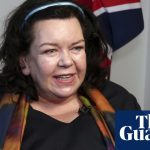A damning report on a deadly London highrise fire said on Wednesday that decades of failures by government, regulators and industry turned Grenfell Tower into a “death trap” where 72 people lost their lives.
The years-long public inquiry into the 2017 blaze concluded there was no “single cause” of the tragedy, but said a combination of dishonest companies, weak or incompetent regulators and complacent government turned a small apartment fire into the deadliest blaze on British soil since the Second World War.
The inquiry’s head, retired judge Martin Moore-Bick, said the victims’ deaths were all avoidable, and “those who lived in the tower were badly failed over a number of years” by multiple people and organizations.
While the report may give survivors some of the answers they have long sought, they face a wait to see whether anyone responsible will be prosecuted. Police will examine the inquiry’s conclusions before deciding on charges.

The fire broke out in the early hours of June 14, 2017, in a fourth-floor apartment and spread up the 25-storey building like a lit fuse, fuelled by flammable cladding panels on the tower’s exterior walls.
“How was it possible in 21st-century London for a reinforced concrete building, itself structurally impervious to fire, to be turned into a death trap?” asked the report. It concluded: “There is no simple answer to that question.”
Criminal charges unclear
Sandra Ruiz, whose 12-year-old niece, Jessica Urbano Ramirez, died in the fire, said that “for me, there’s no justice without people going behind bars.”
“Our lives were shattered on that night. People need to be held accountable,” she said. “People who have made decisions putting profit above people’s safety need to be behind bars.”
Police are investigating dozens of individuals and companies and are considering charges, including corporate and individual manslaughter. But they say any prosecutions are unlikely to come before late 2026.
“I can’t pretend to imagine the impact of such a long police investigation on the bereaved and survivors, but we have one chance to get our investigation right,” said deputy assistant commissioner Stuart Cundy of the Metropolitan Police.
Built from concrete in the 1970s, Grenfell Tower had been covered during a refurbishment in the years before the fire with aluminum and polyethylene cladding — a layer of foam insulation topped by two sheets of aluminum sandwiched around a layer of polyethylene, a combustible plastic polymer that melts and drips when exposed to heat.
The report was highly critical of companies that made the building’s cladding. It said they engaged in “systematic dishonesty,” manipulating safety tests and misrepresenting the results to claim the material was safe.
It said insulation manufacturer Celotex was unscrupulous, and another insulation firm, Kingspan, “cynically exploited the industry’s lack of detailed knowledge.” It said cladding panel maker Arconic “concealed from the market the true extent of the danger.”
The combustible cladding was used on the building because it was cheap and because of the “incompetence of the organizations and individuals involved in the refurbishment” — including architects, engineers and contractors — all of whom thought safety was someone else’s responsibility, the report said.
The inquiry concluded the failures multiplied because bodies in charge of enforcing Britain’s building standards were weak, the local authority was uninterested and the “complacent” Conservative-led U.K. government ignored safety warnings because of a commitment to deregulation.
“The recommendations published today are basic safety principles that should already exist, highlighting how the government’s roles, duties and obligations have been hollowed out by privatization,” Grenfell United, an advocacy group formed by victim relatives, said in a statement.
Initial report highlighted fire response failures
The inquiry has held more than 300 public hearings and examined around 1,600 witness statements. An initial report published in 2019 criticized the fire department for telling residents to stay in their apartments and await rescue. The advice was changed almost two hours after the fire broke out, too late for many on the upper floors to escape.
London Fire Brigade came in for further criticism for a “chronic lack of effective management and leadership.” The report said firefighters were not adequately trained to deal with a highrise fire and were issued old communications equipment that didn’t work properly.
Grenfell was a public housing building set in one of London’s richest neighbourhoods — a stone’s throw from the pricey boutiques and elegant houses of Notting Hill — and many victims were working-class people with immigrant roots.
The victims came from 23 countries and included taxi drivers and architects, a poet, an acclaimed young artist, retirees and 18 children. But, per the report, the inquiry had “seen no evidence that any of the decisions that resulted in the creation of a dangerous building or the calamitous spread of fire were affected by racial or social prejudice.”
In the wake of the fire, the U.K. government banned metal composite cladding panels for all new buildings and ordered similar combustible cladding to be removed from hundreds of tower blocks across the country. But it’s an expensive job and the work hasn’t been carried out on some apartment buildings because of wrangling over who should pay.
The report made multiple recommendations, including tougher fire safety rules, a national fire and rescue college and a single independent regulator for the construction industry to replace the current mishmash of agencies.
The ruined tower, which stood for months after the fire like a black tombstone on the west London skyline, still stands, now covered in white sheeting. A green heart and the words “Grenfell forever in our hearts” are emblazoned at the top.








